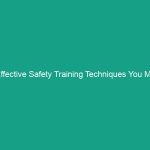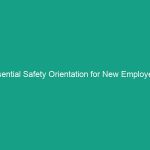Introduction
Good morning team,
Today, we’re diving into a critical topic that affects each one of us here: Essential Guards in HSE: Must-Know Tips to Enhance Workplace Safety. The Safety of our workplace is paramount, and understanding the essential guards can significantly reduce Hazards and enhance our work Environment.
By the end of this Toolbox Talk, you’ll have the knowledge and tools to recognize Hazards and implement Safety Measures effectively. Remember, workplace Safety is not just a set of rules; it’s a culture we all need to embrace.
Understanding Essential Guards in HSE
Essential guards in Health, Safety, and Environment (HSE) serve as protective barriers that prevent accidents and injuries in the workplace. These guards can be physical barriers, such as machine guards, or procedural safeguards, such as safety protocols.
Understanding the importance of these guards is crucial, as they directly impact our daily operations and well-being. Many employees believe that Safety Measures are merely suggestions, but the reality is that they are vital for preventing workplace injuries and ensuring compliance with safety Regulations.
Key Hazards, Risks, and Safety Considerations
When it comes to essential guards, several key hazards and risks must be addressed:
- Machine Hazards: Unprotected moving parts can lead to severe injuries.
- Electrical Hazards: Lack of guards on electrical equipment can result in electrocution.
- Fall Hazards: Inadequate barriers can lead to slips, trips, and falls.
Ignoring these hazards can have real-world consequences, including serious injuries, increased medical costs, and even loss of life. It’s essential to remain vigilant and proactive in identifying and mitigating these risks.
Best Practices, Procedures, & Actionable Advice
To enhance Workplace Safety, here are some Best Practices and Procedures you should follow:
1. Identify Hazards
Regularly conduct workplace inspections to identify potential hazards. Encourage employees to report any unsafe conditions immediately.
2. Use Appropriate Guards
Ensure that all machinery and equipment are equipped with the necessary guards. For instance, if you’re operating a saw, a blade guard must be in place to prevent accidental contact.
3. Train Employees
Conduct regular Training sessions on the importance of safety guards and how to use them correctly. For example, demonstrating the proper use of Personal Protective Equipment (PPE) can significantly reduce risks.
4. Monitor Compliance
Establish a system to monitor the use of safety guards and compliance with safety protocols. Regular audits can help ensure everyone is adhering to safety Standards.
5. Encourage Reporting
Create a culture where employees feel safe to report hazards or near misses without fear of retaliation. Consider implementing an anonymous reporting system.
Case Study: Real-World Incident
Consider the incident at XYZ Manufacturing, where an employee suffered a severe hand injury due to a lack of proper machine guards. This incident not only affected the injured worker but also resulted in downtime and increased insurance costs for the company. By implementing proper guarding procedures, such incidents can be prevented.
Regulations, Standards, and Compliance
Understanding the regulations and standards related to HSE is crucial for maintaining a safe workplace. Here are some key points to consider:
- OSHA Regulations: The Occupational Safety and Health Administration (osha) has specific regulations regarding machine guarding and Workplace Safety. Familiarize yourself with these guidelines.
- ISO Standards: The International Organization for Standardization provides guidelines on safety management systems that can help organizations ensure compliance and enhance safety.
Compliance with these standards is critical as it not only protects employees but also shields the organization from legal repercussions and enhances overall productivity.
Employee Engagement & Discussion
Now that we’ve covered essential guards and Best Practices, I want to hear from you:
- What safety challenges have you encountered related to guards?
- Do you feel that the current safety measures in place are sufficient?
- How can we improve our safety protocols to better protect ourselves and our colleagues?
Your feedback is invaluable in creating a safer workplace for everyone.
Conclusion & Key Takeaways
In conclusion, understanding and implementing essential guards in HSE is crucial for enhancing Workplace Safety. Remember the key points we discussed today:
- Identify and mitigate hazards proactively.
- Utilize appropriate safety guards on all equipment.
- Engage in continuous training and compliance monitoring.
- Foster an environment where safety concerns can be reported freely.
By prioritizing safety, we protect not only ourselves but our colleagues and the company as a whole. Thank you for your attention and commitment to making our workplace a safer environment. Let’s work together to ensure we all go home safe and sound at the end of the day.


